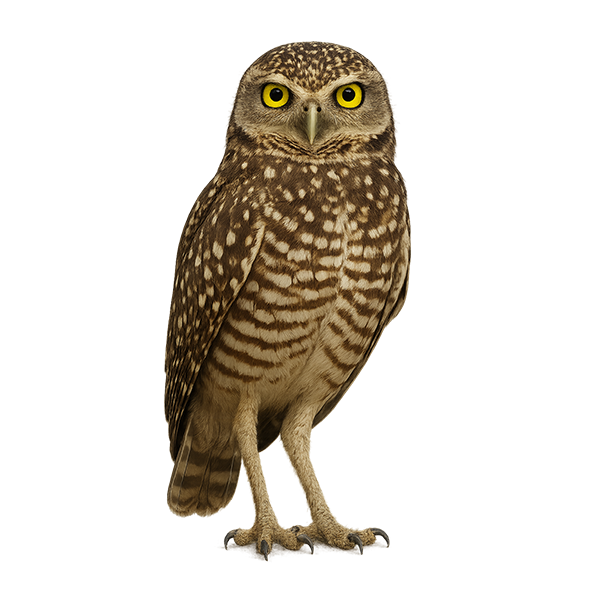Your wildlife photography guide.
Explore the burrowing owl in detail, study its behavior, prepare your shots.
Where to observe and photograph the burrowing owl in the wild
Learn where and when to spot the burrowing owl in the wild, how to identify the species based on distinctive features, and what natural environments it inhabits. The WildlifePhotographer app offers tailored photography tips that reflect the burrowing owl’s behavior, helping you capture better wildlife images. Explore the full species profile for key information including description, habitat, active periods, and approach techniques.
Burrowing Owl
Scientific name: Athene cunicularia

IUCN Status: Least Concern
Family: STRIGIDAE
Group: Birds
Sensitivity to human approach: Not very shy
Minimum approach distance: 5 m
Courtship display: March to May
Incubation: 28-30 jours
Hatchings: April to June
Habitat:
grasslands, deserts, agricultural areas
Activity period :
Primarily active during the day, with peak activity in the morning and late afternoon.
Identification and description:
The Burrowing Owl, Athene cunicularia, is a small owl with brown plumage speckled with white, primarily inhabiting the grasslands, deserts, and agricultural areas of the Americas. Unique among owls, it nests in underground burrows, often dug by other animals like prairie dogs. Measuring about 20 to 25 cm in height, it has long legs that allow it to run swiftly on the ground. Its diet is varied, including insects, small mammals, and sometimes reptiles. Although diurnal, it is most active at dusk and dawn. This species is known for its adaptability to different environments, though habitat loss remains a threat.
Recommended lens:
400mm – adjust based on distance, desired framing (portrait or habitat), and approach conditions.
Photography tips:
To photograph the Burrowing Owl, it is advisable to use a 400mm lens or longer to capture detailed images without disturbing the bird. Look for active burrows in the early morning or late afternoon when the light is soft and activity is at its peak. Be patient and discreet, using a tripod to stabilize your camera. The Burrowing Owl is often curious and may approach if it does not feel threatened.
The WildlifePhotographer App is coming soon!
Be the first to explore the best nature spots, track rutting seasons, log your observations, and observe more wildlife.
Already 1 430 wildlife lovers subscribed worldwide

